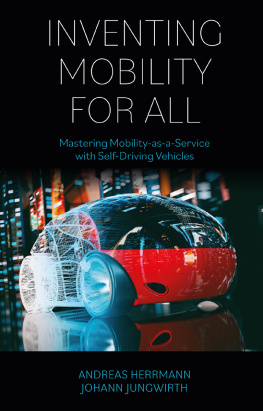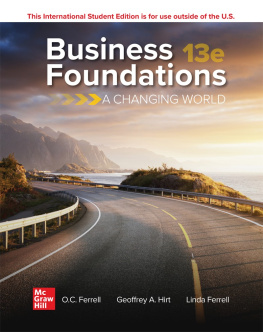Drift
Drift
Illicit Mobility and Uncertain Knowledge
Jeff Ferrell

UNIVERSITY OF CALIFORNIA PRESS
University of California Press, one of the most distinguished university presses in the United States, enriches lives around the world by advancing scholarship in the humanities, social sciences, and natural sciences. Its activities are supported by the UC Press Foundation and by philanthropic contributions from individuals and institutions. For more information, visit www.ucpress.edu.
University of California Press
Oakland, California
2018 by Jeff Ferrell
Library of Congress Cataloging-in-Publication Data
Title: Drift : illicit mobility and uncertain knowledge / Jeff Ferrell.
Description: Oakland, California : University of California Press, [2018] | Includes bibliographical references and index.
Identifiers: LCCN 2017044533 (print) | LCCN 2017051505 (ebook) | ISBN 9780520968271 (ebook) | ISBN 9780520295544 (unjacketed cloth : alk. paper) | ISBN 9780520295551 (pbk. : alk. paper)
Subjects: LCSH : TrampsUnited StatesHistory. | HomelessnessUnited StatesHistory. | TrampsUnited StatesSocial conditions. | TrampsPolitical aspectsUnited States. | RailroadsUnited StatesHistory. | Social valuesUnited StatesHistory.
Classification: LCC HV 4505 (ebook) | LCC HV 4505 . F 47 2018 (print) | DDC 305.5/690973dc23
LC record available at https://lccn.loc.gov/2017044533
Manufactured in the United States of America
26 25 24 23 22 21 20 19 18
10 9 8 7 6 5 4 3 2 1
In memory of Bob Waldmire, drifter extraordinaire
Contents
Acknowledgments
My thanks to Claudio Altenhain, Michael Boudreau, Frank Gemert, Mark Hamm, Willem de Hann, Keith Hayward, John Lennon, Travis Linnemann, Dragan Milovanovic, Gavin Morrison, Laura Naegler, Susan Phillips, Simon Springer, Fraser Stables, Lucia Trimbur, and Ken Tunnell. My thanks also to Maura Roessner and the fine staff at the University of California Press. And to all the freight hoppers out there? Thanks for your timeIll see you down the line.
Portions of the book were previously published in the following:
Jeff Ferrell. Postscript: Under the Slab. In Liquid Criminology, edited by Michael Jacobsen and Sandra Walklate, 22129. London: Routledge, 2017. Reprinted by permission of Taylor and Francis/Routledge.
Jeff Ferrell. Drifting through Space: An Epistemology. Lo Squaderno, no. 39 (March 2016): 2125.
Jeff Ferrell. Drift: A Criminology of the Contemporary Crisis. Radical Criminology, no. 5 (2015): 13968.
Jeff Ferrell. Manifesto for a Criminology beyond Method. In The Poetics of Crime, edited by Michael Jacobsen, 285302. London: Ashgate, 2014. Reprinted by permission of Taylor and Francis/Routledge/Ashgate.
Jeff Ferrell. Outline of a Criminology of Drift. In New Directions in Criminological Theory, edited by Steve Hall and Simon Winlow, 24156. London: Routledge, 2012. Reprinted by permission of Taylor and Francis/Routledge.
Jeff Ferrell. Anarchy, Geography, and Drift. Antipode 44, no. 5 (2012): 16871704.
Jeff Ferrell. Disciplinarity and Drift. In What Is Criminology?, edited by Mary Bosworth and Carolyn Hoyle, 6275. Oxford: Oxford University Press, 2011. Reprinted by permission of Oxford University Press.
Jeff Ferrell. Kill Method: A Provocation. Journal of Theoretical and Philosophical Criminology 1, no. 1 (2009): 122.
1
Drift Dialectics
This is a book about drift and drifters in their many formsa book about the ways in which dislocation and disorientation can become phenomena in their own right. In it I sketch at least something of drifts long history, while also situating contemporary drift within the particular economic, social, and cultural dynamics of the present day. In this I also try to show that drift is today a global phenomenonperhaps even the defining trajectory of a globalized world. Throughout, I explore the contested politics of driftboth the ways in which legal and political authorities work to control drift and drifters and the ways in which drifters and those who embrace drift create their own slippery strategies of resistance. I also trace the use of drift as a conceptual orientation within sociology, criminology, and other disciplines, and I propose that we can bring these and other disciplines into closer engagement with the contemporary world by learning the theoretical and methodological lessons offered by those adrift.
For all that, though, theres something I must admit; youll see it soon enough in this first chapter anyway. This is the fact that, despite my best efforts to maintain a broad, global perspective on drift, Im drawn to one particular sort of drift: that undertaken historically by the North American hobo, and in contemporary times by the hobos bastard descendant, the train-hopping gutter punk. There are a number of reasons for this. First, as has been my habit in other research projects (Ferrell 1996, 2001, 2006), I prefer to do research as independently and immersively as possible and with as few resources as I can manageand, based as I am in the United States, it was certainly more feasible to undertake research with North American drifters than it was with, say, Syrian war refugees in Turkey or North Africans crossing the Mediterranean to southern Europe. As will become clear throughout the book, drifting also tends to be highly uncertain and distinctly episodic, so this too necessitated a lengthy, loose research strategy more readily undertaken from my home turf. But really, as long as Im being honest, its more than that. Its that the music and culture of hobos, High Plains drifters, blues travelers, and gutter punks are part of who I am and were so long before I began to understand the shadowy links between them. Its the fact that this book was written late in the North American night, with the rumbling thuds and booming train horns of the nearby rail yard echoing through my windows, reminding me of the train hoppers and gutter punks out there rolling through the darkness. Most of all, as Ill explain in chapters 5 and 6, its because I stumbled into my research with gutter punks and contemporary hobos right in the middle of writing this more general book on drift and drifters. Unintended and unplanned, this accidental association led me to all sorts of historical and contemporary insights regarding drift; it took me beyond my own expectations, to places I otherwise couldnt have found or imagined.
And if thats not drift, I dont know what is.
UNCERTAIN TRAJECTORIES
For those caught up in them, particular historical moments trace distinctly different trajectories across the arc of prospects and perception. Among certain adherents to the mythology of Western modernity, one moment after another has often seemed connected along a straight and ascending line to a better futurea future fulfilled by the insights of science, the convenience of technology, and the satisfactions of material prosperity. Within and against this modernist ascension, fundamentalists have often sought to reverse its trajectory, to return the social order to the past principles of founding fathers and founding documents. Reactionaries all, they push back against what they see as prevailing myths of progress, afraid that, if left unchecked, the social order will move only toward accumulating moral decay. Political revolutionaries often see, or long for, a trajectory that resembles that of a rocket launcha new social order, blasting free from the old, taking flight, roaring upward toward a firmament of previously unimagined possibility. When, on the other hand, a social order fails of its own accord, from inside its own rotting contradictions, some find themselves caught in an opposite trajectory, descending quickly and deeply into economic ruin and existential despair; others ride a sad social spiral, a process of circling back time and again on recurring problems, each time a bit farther from their solution; and some, Durkheimians especially, sense a dispersal out from the middle, a centrifugal failure of social bonds and cultural cohesion. From the view of certain non-Western religious and cultural traditions, of course, it might be added that all these trajectories are soundly inconsequential, if not entirely illusory, subsumed as they are within an endless, circling trajectory of time and space reincarnated.









